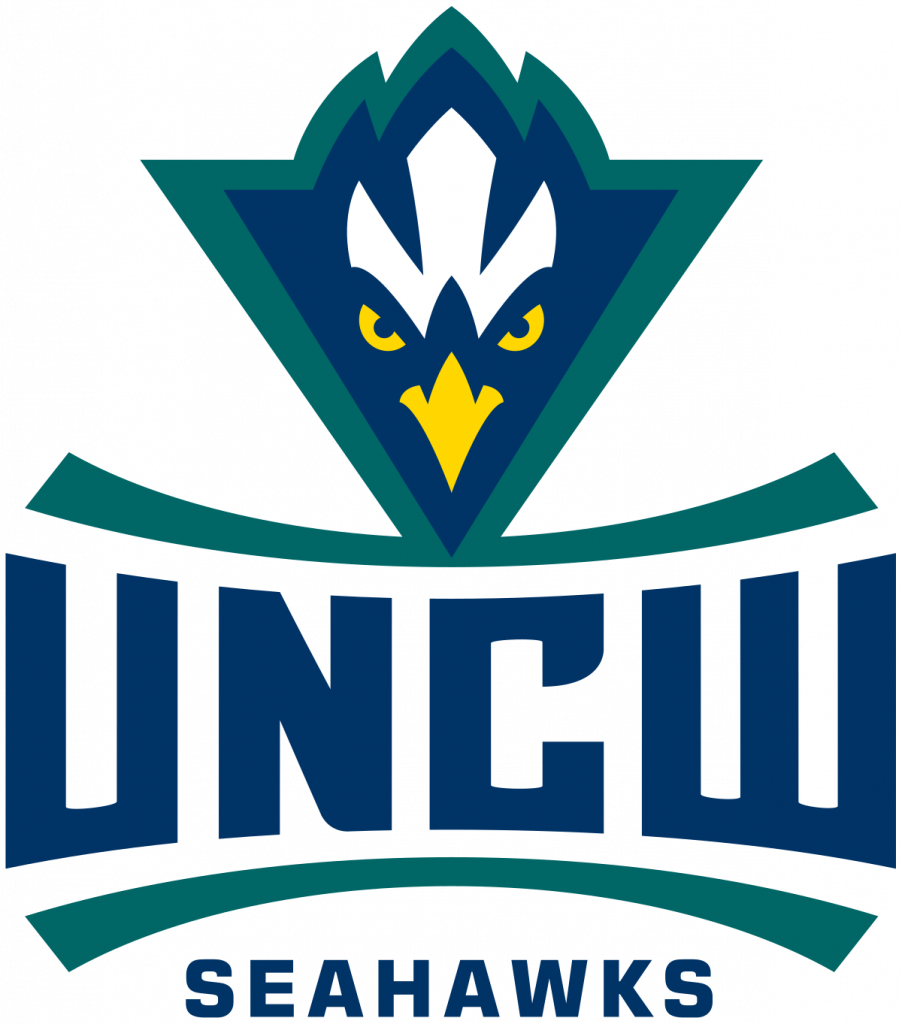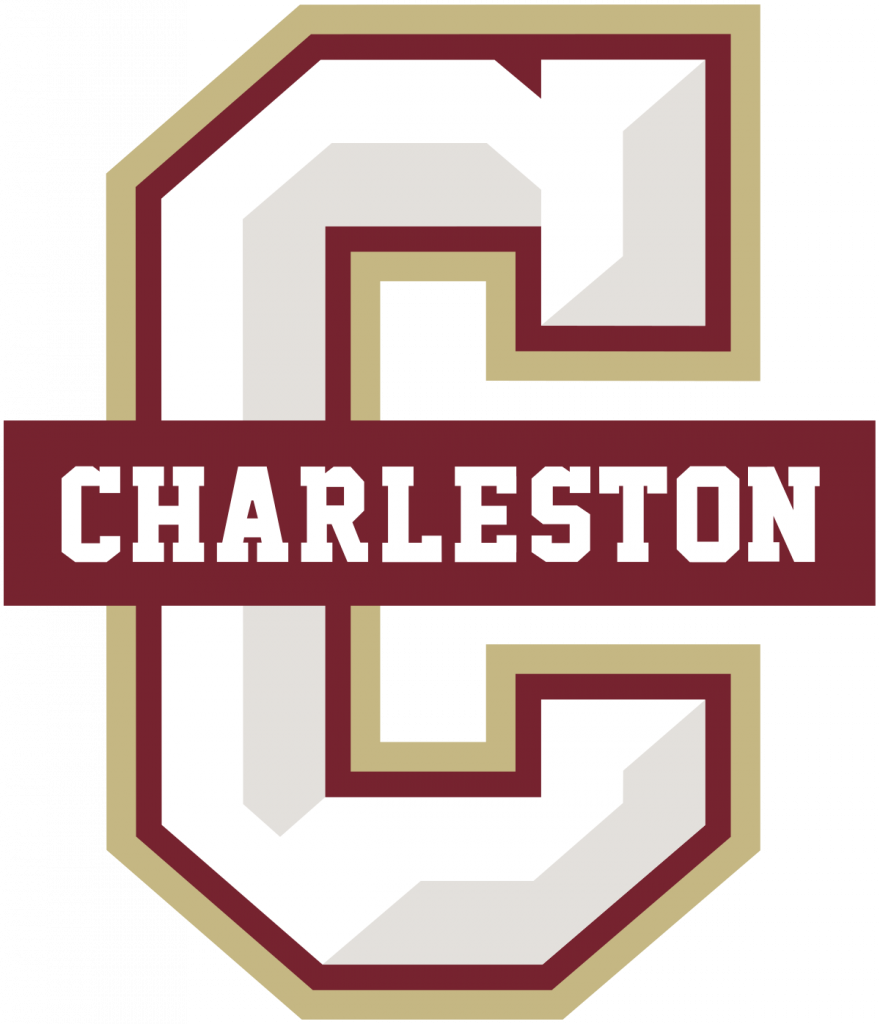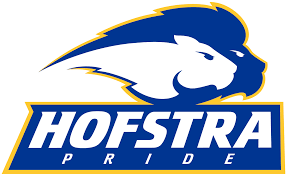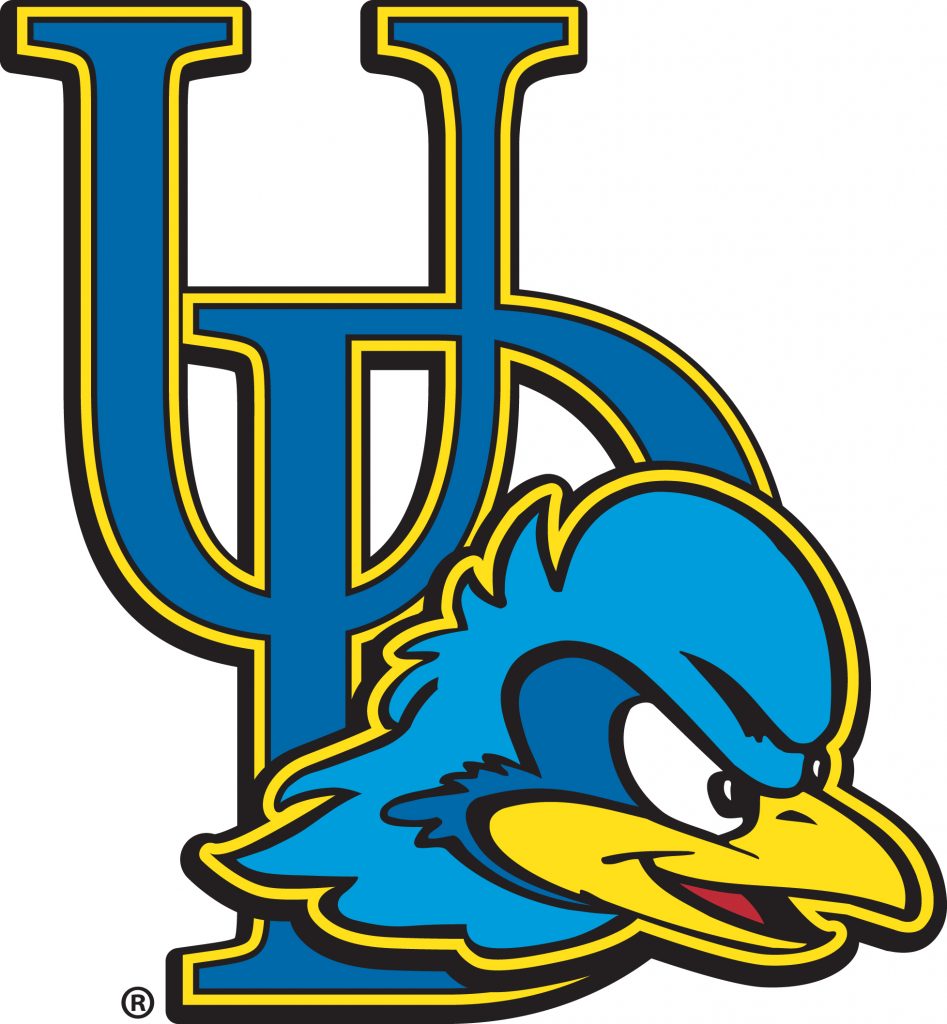With the CAA’s conference slate beginning today, WRBB examined the non-conference performances of all 10 CAA teams and ranked them from worst to best. The rankings are based on each team’s record and strength of schedule, with occasional deviations if a deep dive into a team’s schedule, margins of victory, or statistics warranted one.
CAA teams played 125 non-conference games and won 68 for a winning percentage of .544. Their average opponent, as determined by KenPom’s strength of schedule metric, was very slightly below the Division I average.
They also spent a sizeable chunk of the last six weeks bludgeoning Division II and III squads. Eight CAA teams won a game by 40 or more points, with three teams winning by 60 or more. The largest margin of victory went to the Towson Tigers, who flattened Division III Bryn Athyn by 69 points. Only Northeastern’s biggest blowout — a 57-point laugher against Holy Cross — came against a Division I team.
Though a comment or prediction is given for each team’s upcoming schedule, the rankings reflect only how the teams performed in their completed non-conference games. Each section is prefaced with the team’s record, strength of schedule rank (compared to other CAA teams), head coach, and, just for kicks, the player with the best name along with an explanation for why.
With that said . . .

#10: Elon Phoenix
Non-Conference Record: 4–9
Strength of Schedule Rank: Fourth
Head Coach: Mike Schrage (first season)
Best Player Name: Federico Poser — fun to say whether you pronounce it correctly or not
This is not to say that Elon had no bright spots in the season’s first six weeks. Stanford grad transfer Marcus Sheffield emerged as a premier scorer, posting 17 points per game to go along with five rebounds and three assists.
Freshmen Hunter Woods and Hunter McIntosh were also pleasant surprises for a team that lost its top five scorers from last year. Both are averaging double figures in scoring and shooting more than 40 percent form downtown. Woods also leads the team in rebounding.
The Phoenix even managed to hang with No. 5 UNC for the first 20 minutes of their November 20 matchup, despite the Tar Heels entering as 30 ½-point favorites. Though UNC pulled away at the start of the second half, the Phoenix faithful could take some small comfort in Sheffield’s poster slam over former CAA standout Justin Pierce.
But the good news ends there for Elon. The UNC loss was one piece of a six-game losing streak. Of their four non-conference wins, two came against Division II teams, one against a Division III squad, and one against a Kennesaw State club ranked 342 out of 353 Division I teams.
The Phoenix are last in the CAA in offense and scoring margin, and are the only squad shooting below 40 percent from the floor. They are last in offensive rebounds and rebounding margin. Their sole saving grace is their three-point shooting; they are the only CAA club making more than 10 threes per game and are fourth in three-point percentage. But even then there is a downside; they are worst in the conference at defending the three.
The emergence of Woods and McIntosh as scoring threats is welcome news for first-year coach Mike Schrage. But Elon’s lack of depth and veteran talent is evident. Given that the team finished with the CAA’s worst non-conference record despite multiple players exceeding expectations, it’s hard to imagine they can pose a threat during conference play.

#9: UNCW Seahawks
Non-Conference Record: 5–8
Strength of Schedule Rank: Third
Head Coach: C.B. McGrath (third season)
Best Player Name: Brian Tolefree — you don’t have to pay for him
If the William & Mary Tribe were the CAA program most ravaged in the offseason — four of their top five scorers fled to other schools after the dismissal of longtime head coach Tony Shaver — then UNCW was the program most ravaged in non-conference play.
Though the Seahawks weren’t expected to shine much after the graduation of monster forward Devontae Cacok and the transfer of junior standout Jeantal Cylla, they at least had a few exciting pieces to fuel coach C.B. McGrath’s up-tempo offense.
The first domino to fall was sharpshooting junior guard and leading returning scorer Ty Gadsden, who began the season sidelined by injury, played December 7 against Charlotte, and hasn’t played since. The team confirmed he is out indefinitely, indicating that he may return sometime this season. The same cannot be said for fellow junior guard Jay Estimé, who injured his knee, went under the knife, and will miss the rest of the season. The injuries, when combined with the departure of grad transfer Carter Skaggs in November, gutted a Seahawks’ roster struggling for experience (the Seahawks are one of seven Division I teams without a senior).
But the last and largest domino fell after the team’s non-conference closer against Vanderbilt on December 21, when sophomore point guard Kai Toews informed McGrath and his staff that he is leaving the program. McGrath called the announcement a “total surprise.” The team said Toews planned to pursue a professional basketball career in his native Japan; Toews announced on Twitter that he was “thinking of going on a professional path or transferring.” Toews said previously that he would like to compete for the Japanese national team at the FIBA World Cup and the 2020 Tokyo Olympics.
Though he was averaging just five points, four rebounds, and three assists this year, Toews was a crucial component of the team’s future. Although he wasn’t a major scoring threat, he was named to the CAA All-Rookie Team last year after breaking the conference record with 253 assists.
In their stead, sophomore guard Jaylen Sims has picked up some slack, leading the team in points (15) and rebounds (6) per game while shooting a CAA-best 47 percent from behind the arc.
Sophomore forward Martin Linssen has also chipped in, logging 10 points and four rebounds per game in his first season with the Seahawks after transferring from Valparaiso. But the biggest surprise has been six-foot freshman guard Shykeim Phillips, who is averaging nine points per contest on 49 percent shooting. Though he isn’t scoring from the perimeter, he uses a smorgasbord of quick hesitations, jukes, and handles to dart to the basket for layups. Phillips began the season off the bench, but earned a starting spot several weeks in.
But, like Elon’s, most of UNCW’s five wins have come against Division III teams, with Campbell and FIU as the only DI victories. The four departures and injuries are reflected in the CAA-worst five-game losing streak they take into conference play. Their typically high-octane offense keeps their scoring, field goal percentage, three-point percentage, and assists in the CAA’s top five, but their field goal, three-point, and scoring defense all rank ninth.
Even if Ty Gadsden returns for a good chunk of conference play, enough damage has been done to put the Seahawks in contention with the Phoenix for the CAA’s bottom spot.

#8: Drexel Dragons
Non-Conference Record: 7–6
Strength of Schedule Rank: Sixth
Head Coach: Zach Spiker (fourth season)
Best Player Name: Coletrane Washington — greatest jazz name of all time
Like Elon and UNCW, Drexel needed to replace a mix of graduates (Trevor John, Troy Harper) and transfers (Alihan Demir). The three combined to average more than half of the team’s points last season.
Unlike Elon and UNCW, Drexel has maintained enough healthy talent to post a winning record in non-conference play.
The biggest component behind the Dragons’ success has been the miraculous progression of senior guard/forward Zach Walton, who jumped to Drexel from Edmonds Community College (not in the NCAA) and played just seven games last year before an injury ended his season. Walton had a breakout night in the team’s third game against Abilene Christian, dropping 22 points and sinking the game-winning three after reigning CAA Rookie of the Year Camren Wynter was denied the ball.
Ten days later, he dropped a season-high 32 points in a win over Bryant. Though Walton’s 28 percent clip from downtown leaves much to be desired, his 13 points per game are keying a Drexel offense badly in need of scoring punch. His four boards per night and a steady series of highlights aren’t too shabby either.
Wynter and James Butler sit right behind Walton in the scoring column with 12 points per game. Both lead the CAA in a key category, Butler in rebounds (11.5 a game) and Wynter in assists (5.8). Butler’s inside presence is by far the biggest reason for Drexel’s strong rebounding margin, the third-best in the CAA.
But Drexel lacks both an elite scorer and a deep, balanced roster of offensive options, which will likely spell trouble in conference play. Their offense and defense both ranked eighth in non-conference play, and though their assist and three-point defense stats led the conference, they need to find another gear to exceed preseason expectations. They also need to figure out how to win away from home; they won five of their six contests in Philadelphia but lost all five road games.

#7: Northeastern Huskies
Non-Conference Record: 6–6
Strength of Schedule Rank: Eighth
Head Coach: Bill Coen (14th season)
Best Player Name: Greg Eboigbodin — save for the word “boing,” there’s no better way to describe the motion and feel of a trampoline
It’s surprising to see the Huskies this far down on the list, especially given that their scoring margin ranked third in the conference. But a .500 record and the third-weakest strength of schedule leaves them here.
That said, their bright spot was brighter than anyone else’s. In the season’s first few games, senior guard Jordan Roland torched every defense he saw, leading the nation in scoring and forcing his name into national conversations, award watchlists, and ESPN segments. He infuriated defenses with a flurry of difficult lefty floaters and overwhelmed them with twisting, drifting, contested threes from distances where no one in their right mind would think to shoot a basketball.
Roland’s best game came in an 84–79 win against Harvard on November 8. He scored 11 points in the game’s first three minutes en route to a 42-point firestorm that shattered the single-game school record held by Husky legends J.J. Barea and Reggie Lewis.
Though he tailed off somewhat as the season progressed, his 22.4 points per game still lead the CAA and rank seventh in the nation. His marks of 51 percent from the floor, 43 percent from three, and 93 percent from the foul line are all preposterous, and rank as the conference’s fourth-best, second-best, and best, respectively. He is also second in the conference in minutes per game (37.3) and has established himself as the clear favorite for CAA Player of the Year ahead of Delaware’s Nate Darling and Charleston’s Grant Riller.
Tyson Walker, Max Boursiquot, and Shaq Walters have stepped up at various times, giving hope that the Husky offense can become more balanced. Walker in particular has exceeded expectations, starting every game and taking the offensive keys from graduating guard Vasa Pusica.
But the consistency hasn’t been there. Senior guard/forward Bolden Brace, who was expected to be the team’s second scoring option behind Roland, has shot efficiently but hasn’t scored in volume, logging double figures in just four of the team’s 12 games. Without reliable scoring from him, Northeastern will be hard-pressed to remain a top-three CAA team.
The team also suffered from injuries to big men; 6’8” Tomas Murphy has missed the last eight games with an ankle injury and 6’10” Greg Eboigbodin has missed the last two. Though there have been some fine performances in their stead — namely back-to-back double-doubles by 6’5” utility man Max Boursiquot — the lack of size has presented problems for the Huskies. Though their CAA-worst rebounding numbers are partially attributable to their having the slowest pace in the conference, their challenges in crashing the boards without Murphy and Eboigbodin have often hampered their ability to build and maintain momentum in games.
The Huskies excelled from the outside, nailing a CAA-best 41 percent of their three-pointers, with their three most frequent perimeter shooters all shooting between 42 and 44 percent. They also sank 82 percent of their free throws, easily the best mark in the conference. But they allow the CAA’s highest field goal percentage, in large part due to the shortcomings of their interior defense.
The Huskies’ non-conference slate left plenty for coach Bill Coen to be optimistic about. But offensive inconsistency, namely from players not named Jordan Roland, left the Huskies with a .500 record when they could have fared much better.

#6: Towson Tigers
Non-Conference Record: 6–6
Strength of Schedule Rank: Second
Head Coach: Pat Skerry (ninth season)
Best Player Name: Demetrius Mims — m’s in all the right places
Last year, Towson struggled mightily, winning less than a third of their games while trying to incorporate 11 new players. This year, with 90 percent of their scoring and 86 percent of their rebounding from last year returning, the Tigers have a much better chance to develop.
Towson finished with the same 6–6 record as Northeastern, but Towson had a higher strength of schedule. Oddly enough, their most encouraging moment was a loss. Despite entering a mid-November game against the No. 15 Florida Gators as 18 ½-point underdogs, the Tigers kept the game close throughout. The clubs were tied with 80 seconds left before Florida salvaged a six-point win.
As expected, senior guard Brian Fobbs has keyed the Towson attack, averaging 17 points and five boards a night. However, his relatively low efficiency marks (41 percent from the field, 29 percent from three) will have to rise before he can join the elite tier of CAA scorers.
Sophomore guard Allen Betrand and senior forwards Nakye Sanders and Dennis Tunstall have continued their solid offensive production from last year. But all three will need to up their production before Towson can take the next step.
The Tigers’ reliably scrappy, energetic defense has shown up this year; they allow a CAA-best 65.4 points per game and boast the second-best rebounding margin and third-best steal total. But they don’t rank near the top of the conference in any meaningful offensive category and only Fobbs qualifies as any sort of offensive standout.
Their excellent defense can only take them so far, and if Towson wishes to capitalize on the senior seasons of Fobbs, Tunstall, and Sanders, the entire team needs to boost its scoring.

#5: Charleston Cougars
Non-Conference Record: 6–6
Strength of Schedule Rank: First
Head Coach: Earl Grant (sixth season)
Best Player Name: Zep Jasper — plenty of powerful plosives
Charleston is a general consensus top-three CAA team that finished 6–6 in non-conference play. At first glance, this might lead to comparisons with Northeastern, but Charleston had a decidedly superior non-conference slate.
Though they suffered blowout defeats at the hands of Oklahoma State and Central Florida, their other four losses were by single-digit margins to good teams: Central Florida again, Wake Forest, Richmond, and VCU. The Cougars fought through the most difficult non-conference schedule of any CAA team and emerged with plenty to be happy about.
They are led by senior guard and CAA Preseason Player of the Year Grant Riller, who is logging 21 points, four rebounds, and four assists per night. His scoring mark is good for third in the CAA (20th in the nation) and his field goal and free throw percentages are both top five in the conference. His scoring is coming in the same way it did last year: subpar three-point shooting and a sky-high percentage around the rim.
On November 29, Riller keyed a win over Providence and passed former teammate Jarrell Brantley for third on the school’s all-time scoring list. Two weeks later, he notched his 2,000th collegiate point.
That said, there is room for Riller to improve, particularly regarding his 26 percent mark from three-point land. He’s had a strong season, but at his best he is the conference’s greatest scorer and arguably its top player overall. He hasn’t hit his ceiling yet.
The Cougars lack a clear second scoring option behind Riller, but junior guard Brevin Galloway and senior forwards Jaylen McManus and Sam Miller have all assumed larger roles in the offense. Miller in particular has stood out, notching seven points and seven rebounds per contest thanks in part to moderately efficient perimeter shooting.
The Cougars boast a strong defense, led by a combined four steals per game from Riller and Galloway. Though their CAA-worst perimeter shooting badly warrants improvement, many of their other low ranks in team stats compared to other CAA squads can be explained away by their slow pace of play and the tough competition they’ve faced so far.
Their record isn’t fantastic, and there is room for improvement up and down the roster. But don’t be fooled; this Cougars team is still dangerous.

#4: James Madison Dukes
Non-Conference Record: 7–4
Strength of Schedule Rank: Seventh
Head Coach: Louis Rowe (third season)
Best Player Name: Michael Christmas — because Christmas time is here
At the outset of the season, James Madison appeared poised to snap a streak of three consecutive losing seasons, and they haven’t disappointed so far.
Leading the way is junior guard Matt Lewis, who ranks fifth in the conference in points (18), rebounds (7), and minutes (35) per game, and adds a third-best five assists per game as well. He’s taken the lead on a team with no seniors in the regular rotation.
His backcourt partner and fellow junior Darius Banks is faring almost as well, averaging 14 points (on 41 percent from downtown) and five boards a night. He has also continued his thievery from last year, swiping the ball 1.6 times per contest.
And if that wasn’t enough junior talent, try 6’8”, 250-pound junior forward Dwight Wilson, who missed the first four games of the season but has averaged a double-double since. Or junior forward Zach Jacobs, who chips in eight points and six boards a game.
But the performance nobody saw coming, especially with so many returning offensive centerpieces, is freshman forward Michael Christmas, who is putting up nine points and six rebounds per game, shooting a comical 46 percent from three on decent volume, and has established himself as a one-man highlight reel.
The Dukes’ team stats require a bit of context to decipher. At first glance, their counting stats and percentage stats appear to tell opposing stories. This is explained by the team’s pace of play, easily the fastest in the conference. The Dukes have the 26th-fastest pace out of 353 Division I teams; the next closest CAA team is Hofstra, nearly 100 spots down the list.
More possessions mean that the Dukes score more and give up more points, skewing their counting stats. The percentage stats tell a more accurate story. James Madison is eighth in the CAA in field goal and three-point percentage; save for Banks and Christmas, the regular three-point shooters are converting less than a third of their tries. They also struggled from the charity stripe, making just 65 percent of their free throws.
The Dukes shone on defense, limiting opponents to the lowest field goal percentage and second-lowest three-point percentage of any CAA team. They also led the conference in blocks.
The Dukes’ offense has a high ceiling and is likely to improve as the season progresses. But it is their defense that has turned heads, going from a middle-of-the-pack unit last year to — along with Towson — the conference’s best so far this year. If they can overcome the offensive hole left by the graduation of Stuckey Mosley, the Dukes can join the CAA’s top tier.

#3: Hofstra Pride
Non-Conference Record: 9–4
Strength of Schedule Rank: Tenth
Head Coach: Joe Mihalich (seventh season)
Best Player Name: Stafford Trueheart — no idea why he’s playing basketball instead of commanding the English army in the 12th century
Hofstra begin their non-conference schedule with a mandate (a first-place finish in the CAA Preseason Poll) and the question of how to replace the offense of graduating guard Justin Wright-Foreman, the two-time reigning CAA Player of the Year and arguably the best scorer the conference has seen in years?
But, as it turns out, you can lose Wright-Foreman and still have the best and deepest backcourt in the conference. It begins with a pair of seniors: Eli Pemberton and Desure Buie.
The pair have remarkably similar numbers. Pemberton averages 17.1 points per game, good for sixth in the conference; Buie’s 16.6 points rank eighth. Pemberton is third in minutes per game with 35.6; Buie is right behind him at 35.5. Pemberton averages six rebounds per contest; Buie notches six assists, good for second in the conference. Buie has also retained the defensive brilliance that won him CAA Defensive Player of the Year last year; he leads the conference with 2.7 steals a night.
Junior guards Jalen Ray and Tareq Coburn round out the backcourt, averaging a combined 18 points and 11 rebounds. Coburn’s seven rebounds per contest lead the team, while Ray has been the most efficient scorer among the Hofstra guards, shooting 41 percent from downtown.
Sophomore forward/center Isaac Kante, who sat out last season after transferring from Georgia, has established himself on a squad short on rebounding and defensive presence down low. He is averaging nine points on 61 percent shooting to go along with seven rebounds.
The Pride also scored the biggest win of any CAA team so far this season. On November 21, they walked into Pauley Pavilion and toppled UCLA.
Keyed by 29 points from Buie and 27 from Ray, Hofstra came back from a 13-point first-half deficit to take the game 88–78. It was the Bruins’ first loss of the year and one of the biggest wins in program history for Hofstra.
The Pride are the best-scoring offense in the CAA so far, though their numbers are inflated by their relatively fast pace of play and their strength of schedule, which was the weakest of any CAA team. Their four main guards are all among the conference’s ten best free throw shooters, with Buie’s 91 percent second only to Northeastern’s Jordan Roland. The team as a whole knocks down 78 percent of their foul shots, second only to Northeastern’s 82 percent. The Pride have the most steals, most offensive rebounds, and best assist-to-turnover ratio of any CAA team.
Hofstra’s biggest causes for concern inside depth (as evidenced by their middle-of-the-pack rebounding numbers) and efficiency — they ranked seventh in field goal percentage and three-point percentage.
The Pride enter conference play riding a three-game winning streak. They have a quartet of guards that can outpace anyone. If they can find the efficiency and inside play buttons, they will be an imposing bunch.

#2: William & Mary Tribe
Non-Conference Record: 8–5
Strength of Schedule Rank: Fifth
Head Coach: Dane Fischer (first season)
Best Player Name: Thatcher Stone — if people were once again named after their professions, you’d hire him to build you a sturdy house
This one was a surprise.
A month after their CAA Tournament exit last season, the Tribe looked like a bomb had hit them. Tony Shaver, their coach of 16 years, had been fired. Justin Pierce, Matt Milon, Chase Audige, and LJ Owens — four of the team’s five leading scorers who had a combined eight years of eligibility remaining — had transferred. Leading scorer Nathan Knight was thinking about bailing on his senior season and declaring for the NBA draft.
New head coach Dane Fischer walked into this mess and pulled everything together. The Tribe posted the CAA’s fourth-best winning percentage in non-conference play; the three teams ahead of them had considerably weaker schedules.
It begins, as any William & Mary conversation inevitably does, with Knight. When he decided to return for his senior season, the Tribe retained the conference’s best big man and, along with Charleston’s Grant Riller, a solid candidate for Player of the Year. He hasn’t disappointed, posting nightly averages of 20 points and 10 rebounds, with his 56 percent mark from the field and 1.5 blocks per game leading the conference. Along with Northeastern’s Jordan Roland, Knight was named to the watchlist for the Oscar Robertson Trophy, given annually to college basketball’s best player.
As spectacular as Knight has been, his elite play was expected. What wasn’t as expected was the establishment of senior center Andy Van Vliet as an elite two-way player. The seven-foot Wisconsin transfer is averaging 15 points and 10 rebounds a night, the latter tied with the 6’10” Knight for second-best in the conference. His is sixth in the conference in field goal percentage and blocks.
Good shooters are not hard to come by in the CAA; good shooters who are seven feet tall are rare. Both Knight and Van Vliet can space the floor, nailing 35 and 39 percent of their threes, respectively. This allows Fischer to play a twin towers lineup without sacrificing perimeter shooting, creating matchup and switching nightmares even for well-balanced defenses.
The Tribe also have benefitted from a pair of guards: grad transfer Bryce Barnes and junior Luke Loewe. Barnes is averaging eight points, three rebounds, and four assists a night in his first and only season for the Tribe after three years playing for Milwaukee. Loewe has taken a gigantic step forward, upping his production and efficiency across the board. He’s averaging 11 points a night on a hyper-efficient 53 percent shooting from the floor and 47 percent from downtown.
Sophomore guard Thornton Scott has missed nine straight games with a lower leg injury. In the four games he played — all of which the Tribe won — he showed tremendous progress from last year, averaging 13 points, five rebounds, and four assists with an absurd 52 percent clip from downtown. If he returns soon, it will add another weapon to an already well-stocked arsenal.
The Tribe won their first four games out of the gate, three of which came on the road. One of those wins came against Wofford, courtesy of a game-winning layup by Barnes. Before Barnes’s shot dropped, Wofford had won its last 17 home games in a row.
Fischer has picked up his predecessor’s tendency for a relatively even distribution of minutes. Van Vliet leads the team with just 30 per game, trailed closely by Knight and Loewe. It begs the question of what happens if Fischer decides to up their minutes, leaving opponents to face his twin towers for longer stretches.
William & Mary’s team stats reveal no obvious weaknesses so far. Their scoring, assist rate, points allowed, margin of victory, field goal percentage, field goal defense, and three-point percentage all fall between third and fifth. They rank second in defensive rebounds and blocks, and first in rebounding margin. Even their bottom-half offensive rebounding and three-point defense aren’t far off from respectable levels.
Entering the season, the Tribe were a question mark, with Knight projected to dominate but nothing else assured. With non-conference play complete, the Tribe have joined the CAA’s top tier and have as good a shot at the CAA title as anyone.

#1: Delaware Blue Hens
Non-Conference Record: 10–3
Strength of Schedule Rank: Ninth
Head Coach: Martin Inglesby (fourth season)
Best Player Name: Nate Darling — any Delaware fans who think he’s cute have an easy poster idea waiting for them
December 3, 2019. Hofstra, the winner of the CAA Preseason Poll, was 6–3. Northeastern, the defending conference champion, was 4–4.
The Delaware Blue Hens, who most preseason observers had placed outside the CAA’s top tier, were undefeated, winners of nine straight games. And though they fell to earth by losing three of their next four to close non-conference play, the statement had been made: Delaware is the team to beat in the CAA.
Although many had high expectations for junior guard and UAB transfer Nate Darling, he has outplayed those expectations and then some. His 21.4 points per game are second only to Northeastern’s Jordan Roland and rank 16th in the nation. He has played more minutes and made more threes than anyone in the CAA, and his stellar three-point percentage of 42 ranks third. Throw in his four rebounds and three assists per contest, and Delaware has the best CAA transfer since Northeastern nabbed Vasa Pusica from San Diego.
But because one excellent transfer isn’t enough, the Blue Hens have another: sophomore forward Justyn Mutts. In his first season with Delaware after leaving High Point, Mutts is logging 14 points per game on 53 percent shooting (second in the conference to Nathan Knight) and 9.6 rebounds (fourth in the conference). As if that weren’t enough, his highlights are electric.
Now, for the returning play . . . what? They have another transfer? He’s from Villanova? He’s 6’10”? He dropped 19 points in his Delaware debut? Sure, why not? This might as well happen.
Dylan Painter is a midseason transfer, so he only recently became eligible, playing in Delaware’s final two non-conference games. The Blue Hens won nine games in a row, then added a major piece to compliment Mutts down low.
And finally we turn our attention to returning junior guards Ryan Allen and Kevin Anderson. Both have long been ticketed for CAA stardom but have seen serious injuries impede their progress. They’re healthy now, and at the perfect time. They have similar numbers: double-digit scoring, a field goal percentage in the high 40s, and a three-point percentage around 40 percent.
The Blue Hens are third in scoring, points allowed, field goal and three-point defense, and defensive rebounds. They lead the conference in scoring margin, field goal percentage, and assist-to-turnover ratio. Though they ultimately fell 78–70 to No. 20 Villanova, they proved they could hang around against a superior team. In the season’s fourth game, Painter and Anderson combined for 69 points.
Last year, Delaware finished with a losing conference record and lost in the semifinal round of the CAA Tournament. Now they’re stacked, and the road to the conference’s March Madness bid goes through them.

